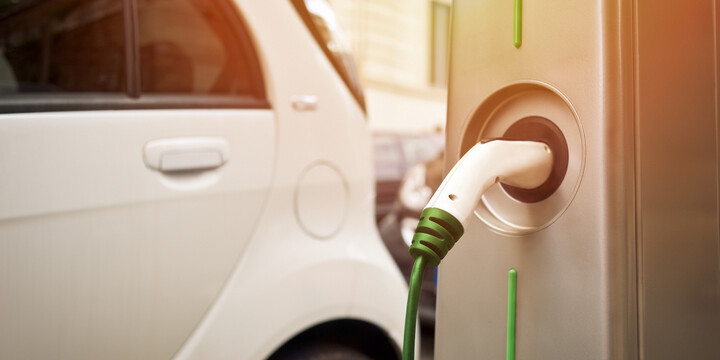
buying an environmentally-friendly car
FREE Car History Check
See MOT history, valuations, detailed specs and more… AND upgrade to see if any vehicle has been stolen, has finance or has been written off from just £4.99
It’s a hot topic for millions of people around the world: how to manage their carbon footprint. One of the biggest emitters that we use every day are our cars, meaning any advancements in environmentally-friendly vehicles are well-received. Also, many governments across the globe are looking to reduce the number of petrol and diesel cars on their roads, even offering incentives to switch to electric or hybrid cars.
In this article, we’re going to look at what makes an eco-friendly car, which are the most popular, and whether they can save both money and the environment.
What is the most eco-friendly car?
The 2019 Hyundai Ioniq Electric is the most energy-efficient car; if we look at the numbers we can see that it uses 33.7kwh for every 1 litre of petrol, giving it a 136MPGe (miles per gallon equivalent). Surprisingly, this beats all the current market Teslas although the Model 3 comes in a close second with 133MPGe. Teslas are also a lot easier to find than the Ioniq, making it a more accessible choice for many.
To define the most eco-friendly cars we need to look at the way in which the power is generated in any particular area. Solar panels, for example, create electricity without any reliance on fossil fuels, whereas electricity from a plant comes from fossil fuels. Either way, electric cars emit far less CO2 than petrol. Tesla is still the top choice in terms of energy management, but other manufacturers are working hard to compete in this ever-growing market.
Is Tesla really environmentally-friendly?
In terms of the energy used to run its cars, Tesla is doing well to be environmentally-friendly, but as we mentioned, a great deal of that power comes from environmentally-unfriendly means. According to Medium.com, in the US, where Tesla was invented, up to 77.6% of electricity used comes from fossil fuels like petroleum and coal. Although this is better than 100%, it is still significantly reliant on unsustainable sources.
The main issue with Tesla and other EV or hybrid manufacturers is that there is not a broad enough infrastructure available right now to support the efficient use of EVs. For example, widespread charging stations, renewable energy grids, and the like will require a huge amount of investment from both manufacturers and governments to make it work. There are more sustainable choices than Tesla, however, including the Renault Zoe and the Kia Electric, both of which are cheaper as well.
Do electric cars really save money?
Another attractive prospect for drivers, apart from saving the world, is that they could save a great deal of money with an EV as opposed to a traditional petrol car. Research from Direct Line shows that the lifetime average running cost for an EV is £52,133 and £53,625 for the equivalent petrol model.
Although a zero-emission model of the same car would cost around £5000 on average, the long-term savings can be substantial, at around £33.50 a week which is 21% cheaper than a petrol car. Not to mention the Plug-In Car Grant, a £3000 government subsidy for zero-emission cars that cost less £50,000.
EVs also tend to have far lower maintenance costs in terms of servicing and MOTs, but they are more expensive to insure. However, as they become more prevalent this cost is likely to reduce. There are also a great many more government schemes expected to be rolled out before the UK’s deadline for the total ban of carbon-emitting vehicles in 2035.
How much will your electric bill go up with an electric car?
If you choose to charge your car at home, which is the main option for most EV owners, the cost will be added to your existing electricity bill. It is therefore important to search out the best tariff so you’re not paying over the odds. You will need to think about how many miles you might do per year and the equivalent measurement in kWh.
A good start is to look at companies that offer off-peak hour prices whereby you can charge your car during the night when it is cheaper and there is less demand on the energy grid in your area.
You will also need to factor in the cost of Installing a home charging station, which is around £1000, although there is a £350 grant from the Office for Low Emission Vehicles (OLEV) which can go towards it.
Will my electric car have enough range?
Electric vehicles will have enough range to cover many general journeys, usually between 150 and 300 miles. There are a few factors to consider when working out range, including how you drive, temperature, and road condition. You can check the manufacturer’s WLTP for more information - this stands for Worldwide Harmonised Light Vehicle Test Procedure and is a global standard to measure fuel consumption and CO2 emissions in a laboratory setting.
For a lot of people looking to start driving electric, the thought of being stranded with no charge miles away from your destination is obviously cause for concern. However, in general you are unlikely to find yourself in that situation, even though there aren’t a huge number of charging stations available in the UK. Many cars come with something called regenerative braking, which will generate electricity as you lift your foot off the accelerator and let the car slow down.
Regardless of the worries, EVs are here to stay and we will only see more of them on UK roads as the years go by. Not only will they help reduce our dependence on finite fossil fuels, but they will also encourage more widespread use of zero-emissions products in all walks of life, so it’s definitely worth thinking about for your next auto purchase.














